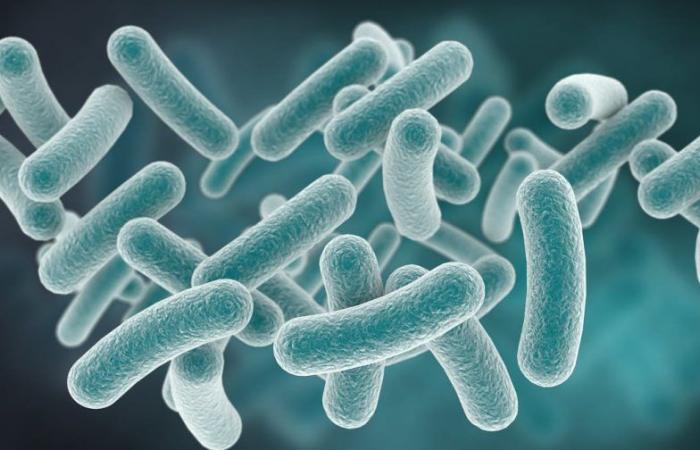We live on a planet of microbes. Can we qualify them as useful or useless? It all depends on the point of view. Let’s take some examples around nutrition, diseases and plants to see more clearly.
Microbes can be useful, of course, but useful to whom? To the organization that hosts it? By itself or, in an anthropocentric vision, by “successive cascades” to humans? And then what microbe are we talking about? Viruses? Bacteria? Mushroom… ? And should we consider an isolated microbe or an entire community? If, for example, we analyze the contents of an animal’s intestine, we are likely to find a mixture of microbes interacting both with each other and with their “host” in interactions of all kinds, whether they are beneficial, unfavorable and neutral. We live on a planet of microbes. There are a billion bacteria in a gram of soil, a million viruses in a liter of seawater, or between 1000 and 20,000 fungal spores in each cubic meter of air. Animals and plants are therefore constantly surrounded by and interact with microbes, and many of these microbes are very useful.
Microbes essential for good nutrition
A first example illustrating the importance and beneficial effect of bacteria on health is linked to malnutrition in children. One might think that undernutrition is simply due to a lack of food. And, indeed, for many years, the only response to undernutrition was to provide food to those affected. Until research on twins in Africa revealed something surprising: Some children were malnourished, while their siblings remained healthy, despite receiving the same amount of food. Even more surprising, if we transfer bacteria from the feces of malnourished children to mice devoid of bacteria in their intestinal tract, these mice in turn quickly show signs of malnutrition.
Today, the role of bacteria in understanding the causes of malnutrition is still poorly understood. However, it appears that a normal intestinal microbial flora is necessary to maintain good health. Children who experience malnutrition have reduced bacterial diversity (called dysbiosis) and often immature intestinal flora (called microbiota) (with very reduced diversity). Simply giving them food is not enough for them to regain good health; their microbiota must also become “normal” again. Better knowledge of the influence of the microbiota on the nutritional status of children will help us to design better treatments against malnutrition using these communities of microbes beneficial to humans.
Every week, our scientists answer your questions.
Do not hesitate to write to us to ask yours and we will find the best person to answer you.
And of course, there is no such thing as stupid questions!
Useful and harmful bacteria (depending on your point of view)
Sometimes relationships can be extremely complex, and bacteria can be helpful or harmful depending on your perspective. Sleeping sickness is a tropical disease caused by a parasite (a trypanosome) transmitted by a vector, the tsetse fly. The tsetse fly absorbs the parasite when it feeds on the blood of an infected animal, and transmits it to another host (human or animal) during a new blood meal.
The bacteriome (community of bacteria) of this fly includes_Wigglesworthia glossinidia_, a primary symbiont essential for the survival of the fly, and A member of Glossiniusa secondary symbiont which promotes infection of the fly by the trypanosome which multiplies there before being transmitted during another bite. Sodalis can be lysogenic (that is to say it has integrated the genome of a virus called “bacteriophage” into its own genome; the viral genome thus integrated is called prophage). By a mechanism whose nature is unknown, the prophage can free itself from the Sodalis genome; it then uses the cellular machinery of the bacteria to reconstitute the active bacteriophage which multiplies then degrades the wall of the bacteria, the residues of which stimulate the fly’s defense mechanisms.
The Sodalis bacteria is then less present in the tsetse intestine, reducing its capacity to be infected and therefore to transmit the parasite. Thus, Wigglesworthia, useful to the tsetse fly, vector of the disease, is unfavorable to humans. Sodalis is useful to the parasite and therefore unfavorable to humans, while the bacteriophage, the killer of Sodalis, is unfavorable to the parasite, therefore favorable to humans! And these are just two bacteria and a virus when many other identified bacteria could also play a role in tsetse fly, parasite transmission and therefore human or animal disease.
Symbioses between plants and microbes
Plants are not left out in these useful interactions with microbes. We now know that the outflow of water, that is to say the colonization of the earth by plants living in water, took place around 500 million years ago thanks to the beneficial association between these plants and fungi, the latter allowing them to draw water from the ground even though they did not yet have roots. A more current example, legumes, a large group of plant species including beans or soybeans, harbor bacteria (called rhizobia) in their root structures which have the capacity to capture nitrogen present in the air to give it back to the plants, thus providing them with an inexhaustible natural fertilizer that allows them to grow in extremely poor soils.
Finally, for several years, numerous studies have shown that plants have on their leaves, in their stems or around the roots a whole community of microorganisms whose presence induces better growth, better resistance to diseases and abiotic stress, via numerous physiological and molecular mechanisms. So the species Potatoes (to which cultivated peppers and chillies belong) is more resistant to drought in the presence of bacterial strains of the genera Acinetobacter et Sphingobacterium.
Currently, researchers are testing the “cry for help” hypothesis, where plants suffering, for example, the attack of a pathogen would manage to attract microbes to them allowing them to better fight against this pathogen. The model plant Arabidopsis thalianaattacked on its leaves by pathogenic bacteria Pseudomonas syringaemanages, by secreting malic acid through its roots, to attract another bacteria, Bacillus subtiliswhich helps it resist pathogenic bacteria. Understanding and using these microorganisms in agriculture is currently one of the most promising avenues for reducing the use of phytosanitary products and chemical fertilizers.
Microbes surround and colonize all living things. Some are pathogenic, many have no effect, but many others play a crucial role in the survival and development of animals and plants. Understanding these beneficial interactions is a major key to our understanding of life, its evolution and ultimately its survival.






